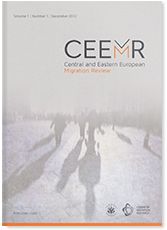Longer-Term Demographic Dynamics in South-East Europe: Convergent, Divergent and Delayed Development Paths
Longer-Term Demographic Dynamics in South-East Europe: Convergent, Divergent and Delayed Development Paths
Author(s): Attila Melegh, Kathrin Gruber, Heinz Fassmann, Elisabeth Musil, Ramon BauerSubject(s): Social Sciences
Published by: Ośrodek Badań nad Migracjami / Uniwersytet Warszawski
Keywords: demographic change; migration cycle; transitions; South-East Europe
Summary/Abstract: This article offers an overview of the longer-term migratory and demographic developments in eight South-East European countries (Austria, Bulgaria, Italy, Hungary, Romania, Serbia, Slovenia and Slovakia). The main research question aims to analyse the different demographic historical developments and to examine whether convergent or divergent processes are dominant. Over the whole reference period, the population size in these eight South-East European countries (the SEEMIG region) grew from around 100 million people in 1950 to 122 million in 2011. This is surprising, as the public image of the region is linked to decline and backwardness and to being peripheral. However, major differences in the demographic developments of the countries can be observed. Some countries, including Austria, Italy and, with some fluctuations, Slovakia and Slovenia, experienced constant population growth during the entire reference period. All other countries were affected by a decrease in population, as was the case for Hungary in the early 1980s, Bulgaria at the beginning of the 1990s and Serbia and Romania since the start of the new millennium. The fertility trend shows a convergence while the mortality trends (including average life expectancy at birth) prove to be divergent. The net migration pattern seems to follow a migration cycle concept which postulates a general shift from emigration to immigration as a consequence of a declining natural increase on the one hand and a growing demand for new labour on the other. Some countries show trends that do not yet follow this pattern, which might indicate that additional factors and interpretative models should also be taken into account. The long-term distribution of growth and decline in the region is quite diverse and underlines the need for differentiation and specific explanations.
Journal: Central and Eastern European Migration Review
- Issue Year: 3/2014
- Issue No: 2
- Page Range: 150-172
- Page Count: 23
- Language: English

